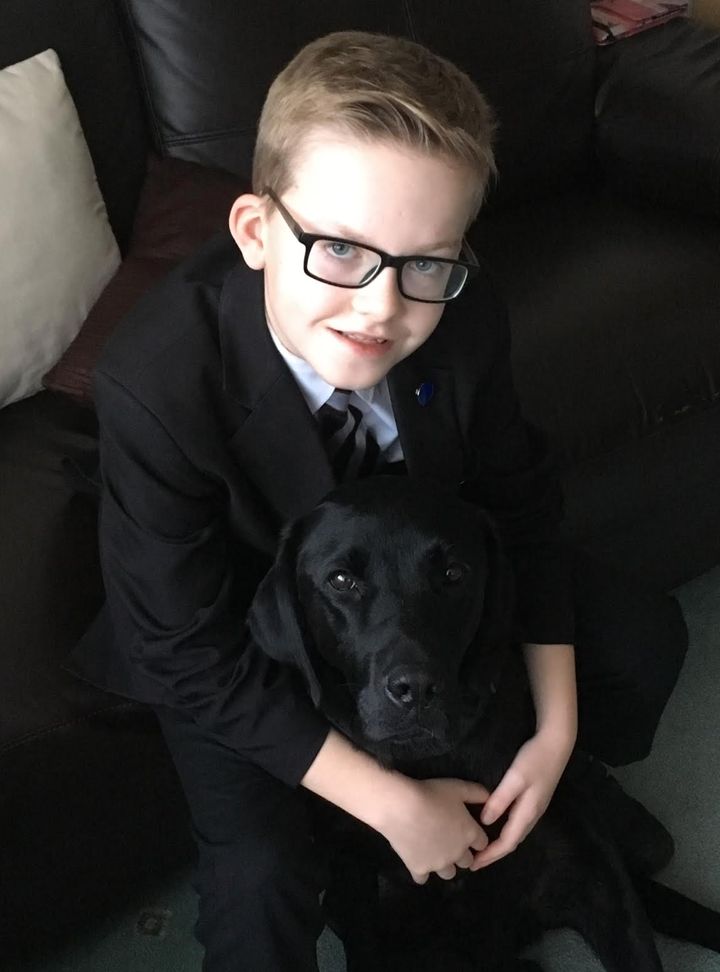A “lost generation” of deaf children are falling a whole grade behind their hearing classmates at GCSE, the National Deaf Children’s Society (NDCS) has warned.
Less than half (48%) of deaf children achieve a grade four or above in both maths and English, compared to almost three quarters (71%) of children without hearing impairments, according to the charity.
What’s more, just 43% of deaf children achieve the expected standard at reading, writing and maths at Key Stage 2, compared to 74% of other children, even though deafness is not a learning disability.
Sadly, the figures are unsurprising for parents like Ann Jillings, from Suffolk, who says she constantly worries her 12-year-old son Daniel will fall behind. “The thing he probably finds hardest is the concentration of watching a BSL [British Sign Language] signer, a teacher, looking at what’s on the whiteboard and everything else at the same time,” she tells HuffPost UK.
“Visually, it’s exhausting. He comes home very tired because he’s just concentrating so hard. He has to work much harder in the classroom than his hearing friends do.”

Figures show the average GCSE grade per subject for a child without special educational needs or a disability is a five – a strong C under the old system. For deaf children, this falls to 3.9, historically a grade D. But deaf children are arriving at school having already fallen behind, according to the analysis based on the Department for Education’s 2018 attainment figures.
“They need a little extra help with things like incidental learning which they miss out on,” Jillings explains. “A hearing child would pick up comments and things that people have said – even in the home – and learn through listening to other people’s conversations. But deaf children don’t have that, so there are some things, like expressions, that have to be specifically taught. It’s about being constantly vigilant, making sure that support is in place.”
Jillings feels lucky her son has a highly skilled BSL interpreter who works with him in school, but describes securing this support as a “battle”, due to lack of available local authority funding. “The budget pressures are having an impact and there are many local authorities cutting budgets for deaf children, which are already spread quite thinly,” she says.
She would also like the government to dedicate more funding towards recruiting teachers of deaf children, who would be trained in how to adapt lessons in mainstream schools to ensure they are fully accessible.

The NDCS says despite a slight improvement in deaf children’s grades since last year, it will take more than two decades to close the grade gap, resulting in a “lost generation” of deaf children. It’s calling on the government to provide additional funding so every deaf child gets the support they need at school.
“These figures show the true depth of the crisis engulfing deaf education in this country,” Susan Daniels, chief executive of the NDCS, said. “How much evidence does the Department for Education need before it acts?
“Meanwhile, the government is starving local councils of funding, meaning their support is cut back and their specialist teachers are being laid off. The government needs to address the gap in results urgently and begin to adequately fund the support deaf children need.”
A spokesperson for the Department for Education told the BBC: “Our ambition for children with special educational needs and disabilities, including those who are deaf, is exactly the same for every other child – to achieve well in education, and go on to live happy and fulfilled lives.
“We recognise that local authorities are facing cost pressures on high needs and that there is more to do, which is why in December 2018 we announced an additional £250m in funding for high needs over this and next year.”